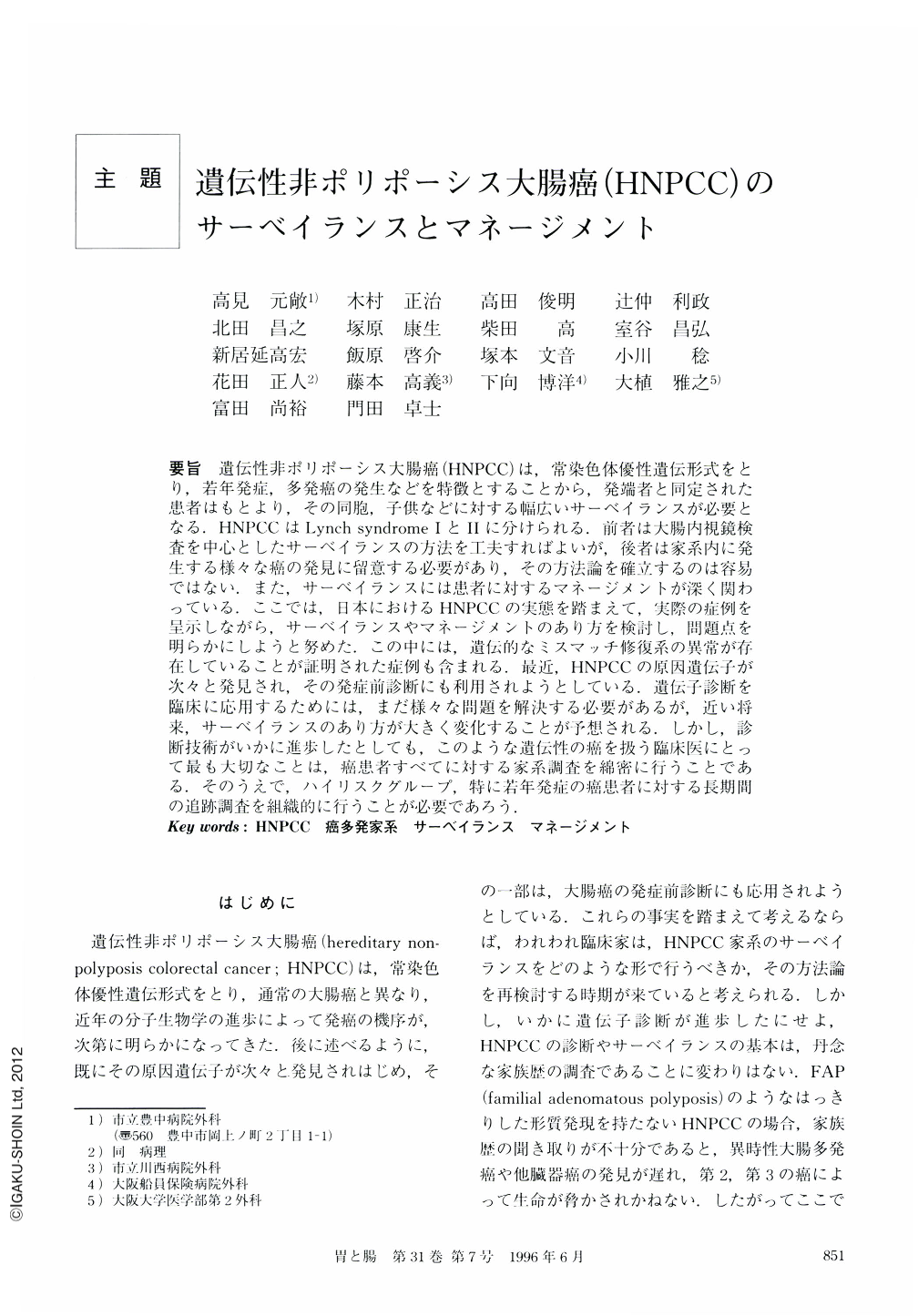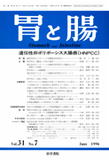Japanese
English
- 有料閲覧
- Abstract 文献概要
- 1ページ目 Look Inside
要旨 遺伝性非ポリポーシス大腸癌(HNPCC)は,常染色体優性遺伝形式をとり,若年発症,多発癌の発生などを特徴とすることから,発端者と同定された患者はもとより,その同胞,子供などに対する幅広いサーベイランスが必要となる.HNPCCはLynch syndrome ⅠとⅡに分けられる.前者は大腸内視鏡検査を中心としたサーベイランスの方法を工夫すればよいが,後者は家系内に発生する様々な癌の発見に留意する必要があり,その方法論を確立するのは容易ではない.また,サーベイランスには患者に対するマネージメントが深く関わっている.ここでは,日本におけるHNPCCの実態を踏まえて,実際の症例を呈示しながら,サーベイランスやマネージメントのあり方を検討し,問題点を明らかにしようと努めた.この中には,遺伝的なミスマッチ修復系の異常が存在していることが証明された症例も含まれる.最近,HNPCCの原因遺伝子が次々と発見され,その発症前診断にも利用されようとしている.遺伝子診断を臨床に応用するためには,まだ様々な問題を解決する必要があるが,近い将来,サーベイランスのあり方が大きく変化することが予想される.しかし,診断技術がいかに進歩したとしても,このような遺伝性の癌を扱う臨床医にとって最も大切なことは,癌患者すべてに対する家系調査を綿密に行うことである.そのうえで,ハイリスクグループ,特に若年発症の癌患者に対する長期間の追跡調査を組織的に行うことが必要であろう.
Hereditary nonpolyposis colorectal cancer (HNPCC) is an autosomal dominant inherited disease characterized by the development of colorectal carcinoma at an early age, a predominance of tumors in the right-sided colon, and a high incidence of synchronous and metachronous colorectal cancers. HNPCC can be divided into two categories: (1) hereditary site-specific colorectal cancer, or Lynch syndrome Ⅰ which is characterized by the development of colorectal cancers only, and (2) Lynch syndrome Ⅱ which is defined as a combination of colorectal cancer and extracolonic cancers.
In this article, we discuss strategy for the surveillance and management of HNPCC based on our experience. Regular colonoscopic examination is a very useful method for families with Lynch syndrome Ⅰ. As a costeffective screening for Lynch syndrome Ⅱ, both colonoscopic and gastroscopic examinations are recommended because carcinoma of the stomach is the most common extracolonic tumor in Japanese patients with this syndrome.
The recent discovery of mismatch-repair genes responsible for the development of colorectal and other cancers in HNPCC may facilitate a presymptomatic diagnosis of this genetic entity. The most important lesson for clinicians is the importance of obtaining detailed family history of all cancer patients and the need for life long follow-up for all HNPCC patients and, perhaps, for all young cancer patients.

Copyright © 1996, Igaku-Shoin Ltd. All rights reserved.


